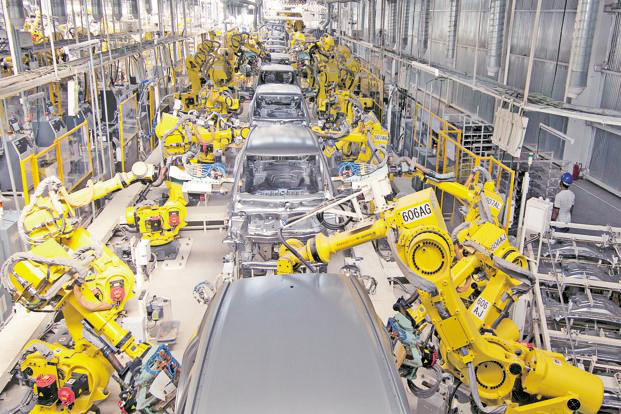-
This is how the question will be judged in the end, when the final outcome becomes known.
-
This is the precise date or end of the period to which the question refers.
-
After reading the judgement rule, please click here.
Price trend
Transactions-
Study the background information carefully.
-
Read the background information carefully, before proceeding.
Wiki article
EditPlease predict ...
.. the future employment level of low-level education workers. A lower level could indicate an effect of automation, but obviously also be the result of other causes.
 Automation and education of workers
Automation and education of workers
Jobs that are routine, repetitive and predictable are most easily done by a machine, for example manual labour in manufacturing but also jobs in service sector such as telemarketing or cooking (fast food). [1]
Other jobs may change, leaving the menial tasks to machines. Humans must aquire new, higher-level skillsets for their upgraded jobs or risk unemployment. Therefore workers with a low level of education should be at a higher risk.
The Luddite Fallacy [2] states that technological advancement does not destroy jobs - it only changes the composition of jobs in the economy. New technologies create new jobs with higher-level skills and a general rise in income. However, some challenge the fallacy as knowledge jobs may now be subject to automation, too.
Employment rate of workers below second level education
Below is actual labour market data over the past twelve years for low-level education. It could point more to the financial cisis of 2007/2008 or to general economic performance as causes for such unemployment. In Germany, a generally improving labour market spilled over to low-level education workers.
Source: Employment by education level - Lowest level education, OECD Data [3].
Sources
[1] The Guardian - "What jobs will still be around in 20 years? Read this to prepare your future"
[2] Technostism Wikia - "Luddite Fallacy"
[3] OECD Data - "Employment by education level" for below upper secondary education.
-
Offering the reason for your trade may convince other traders to follow your opinion.
-
Click '+' if you agree, or '–' to disagree. You get a credit for every rating you make.
-
For each '+' the author will get +100 credits added to his trading account .
-
If you rate a comment with "-", please reply and state your objection.
-
Now please rate, reply, or write your own comment. Best of luck!

